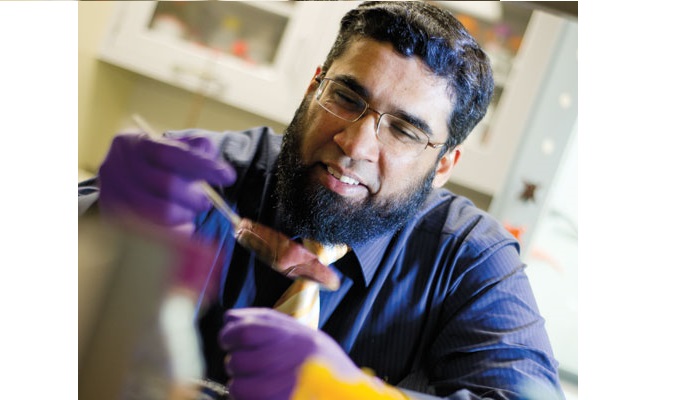An electrical engineer at the University of Texas (Arlington) has created a new cancer cell detection method that is believed to vastly improve upon current early diagnosis procedures.
Should the tool he created prove scalable, it could see widespread use in medical offices the world over.

Samir Iqbal (pictured above), an associate professor in the Electrical Engineering Department at the University, led a team of researchers into developing a tool that tracks cellular behavior in real time using nanotextured walls that mimic layers of body tissue. He explained that there are many layers of tissue in the body, and that he thought it would be useful to create something that would mimic this layering.
“The answer was in creating a nanotextured wall that fools blood samples into thinking its actual tissue,” he explained. “We used inherent properties of the cell walls to create a diagnostic tool. The cancer cells behave differently as they come into contact with the nanotextured walls. They dance.”
Iqbal and his team believe that by identifying those “dancing cells”, doctors will be better equipped to pinpoint cancer cells and start treatment earlier than they can with current technologies.
“Discovering the cancer earlier, before it metastasizes, is essential to surviving cancer,” Iqbal said. “Our device has the potential to do that.”
“Dr. Iqbal and his colleagues are bringing engineering innovation to meet the challenge of early cancer detection,” said Khosrow Behbehani, dean of the UTA College of Engineering. “The research aligns with UTA's Strategic Plan, particularly the focus on Health and the Human Condition. Dr. Iqbal's device could greatly improve cancer survival rates, which is good news for humanity. There are very few people around the world whose lives have not been touched by this dreadful disease.”
To learn more, download the team’s paper, entitled Effects of Nanotexture on Electrical Profiling of Single Tumor Cell and Detection of Cancer from Blood in Microfluidic Channels, which was published in the recent issue of Nature Scientific Reports.
Via the University of Texas
Advertisement
Learn more about Electronic Products Magazine





